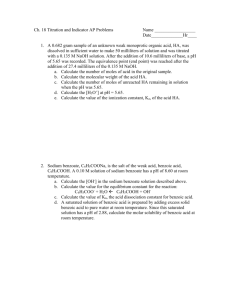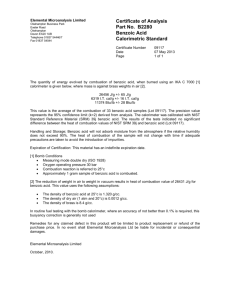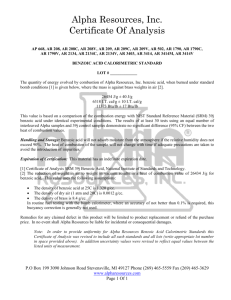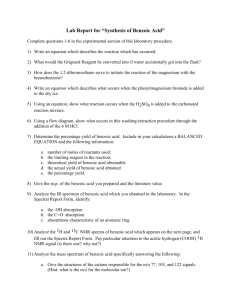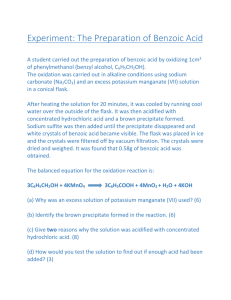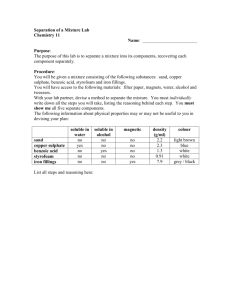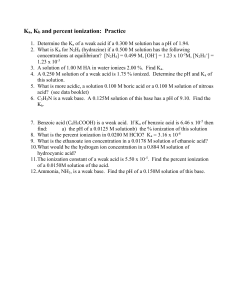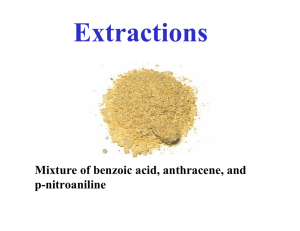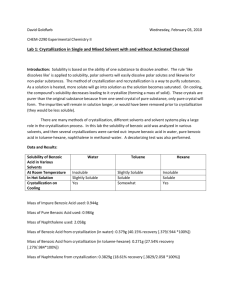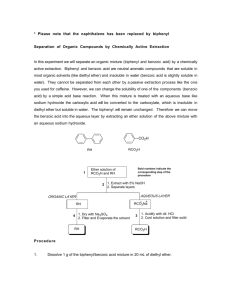CHEM105 Test 2, Chapters 5, 6, 7, 8, 9
advertisement
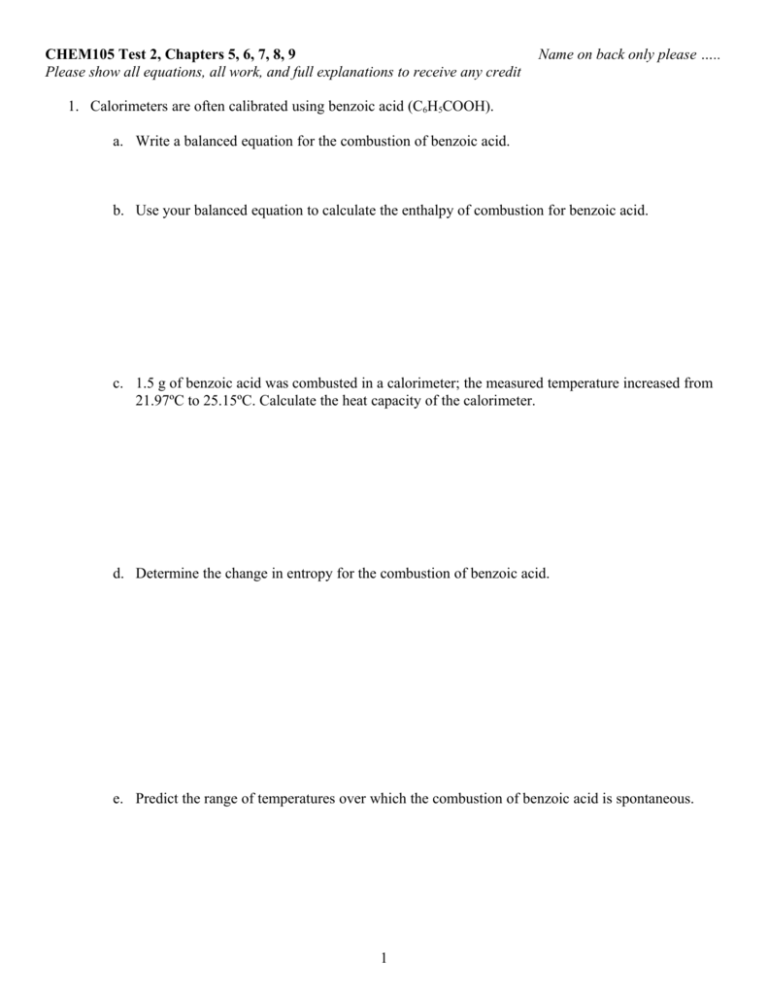
CHEM105 Test 2, Chapters 5, 6, 7, 8, 9 Please show all equations, all work, and full explanations to receive any credit Name on back only please ….. 1. Calorimeters are often calibrated using benzoic acid (C6H5COOH). a. Write a balanced equation for the combustion of benzoic acid. b. Use your balanced equation to calculate the enthalpy of combustion for benzoic acid. c. 1.5 g of benzoic acid was combusted in a calorimeter; the measured temperature increased from 21.97ºC to 25.15ºC. Calculate the heat capacity of the calorimeter. d. Determine the change in entropy for the combustion of benzoic acid. e. Predict the range of temperatures over which the combustion of benzoic acid is spontaneous. 1 f. Identify the intermolecular forces of attraction between different benzoic acid (C6H5COOH) molecules; draw a diagram clearly showing the strongest interaction. g. Predict whether you would expect benzoic acid to be soluble in water. Use thermodynamics to fully support your prediction. h. At T = 298.15 K, the apparent molar enthalpy of solution, ∆Hsol, for benzoic acid is +25.5 kJ/mol. Use this to predict how benzoic acid’s solubility in water would be expected to change with an increase in temperature. Use thermodynamic and equilibria fundamental principles to fully support and to explain your rationale for this prediction i. 1.5 grams of benzoic acid (C6H5COOH) was dissolved into 100.0 mL of water at 298.15 K. Use the molar enthalpy of solution, ∆Hsol, for benzoic acid (+25.5 kJ/mol) to determine the final temperature of the water. Assume that all the heat gained or lost is used to heat or cool the water. 2 2. A recent patent was issued on a process that uses elemental magnesium sublimation to coat silicon carbide fibers for ceramic composite materials. a. Calculate the enthalpy of sublimation for elemental magnesium Mg (s). b. Determine the entropy of sublimation for elemental magnesium Mg (s). c. Determine the temperature at which elemental magnesium sublimates (its vapor pressure is one atmosphere). d. Calculate the Gibbs Free Energy of magnesium sublimation under standard conditions. Explain why your answer does or does not make sense. 3. For the chemical reaction: PCl5 (g) PCl3 (g) + Cl2 (g) a. Predict how the equilibrium would shift if pressure were increased by adding He gas. b. Predict how the equilibrium would shift if temperature were increased. Fully support your prediction with calculations. c. The Kc for this reaction is 0.040 at a temperature of 270ºC. A 5.0 L reaction vessel contains 0.75 moles of PCl5 (g), 0.15 moles of PCl3 (g), and 0.20 moles of Cl2 (g). Is this mixture at equilibrium? If not predict which way it would spontaneously shift to attain equilibrium. 3

